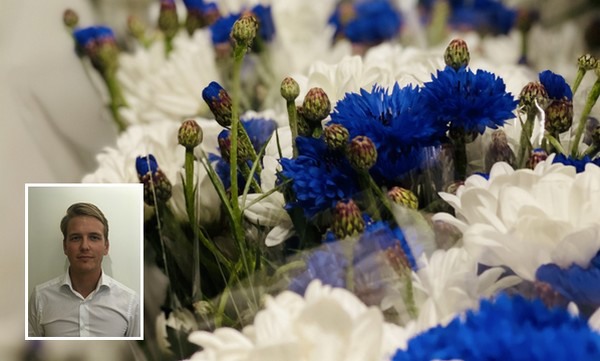“It has been a struggle to get a hold of certain imported flowers for this year’s Midsummer celebration, which will be widely celebrated in Sweden on the weekend of June 25,” explains Adam Muhr, Assistant Manager of APH, a Swedish importer of flowers. “On the other hand, the weather has been very fortunate for growing the traditional cornflower, meaning that this year’s quality and quantity of those will be much better compared to previous years.”
Adam Muhr
A flower celebration
Midsummer is an old Swedish tradition, for which flowers are a big part of the celebration. Every year, people make flower wreaths and decorate maypoles with flowers. Muhr explains: “For the celebration, it is very popular to buy Swedish summer flowers in the traditional colors, which are blue, white and red. For example, the blue cornflower, which is locally grown, and the white chrysanthemum, imported from The Netherlands, are especially popular. As a result, we see a peak in sales around the period of the celebration every year.”
Challenge to get Dutch chrysanthemums
The biggest challenge for this year’s Midsummer has been getting the popular white chrysanthemums, which are imported from The Netherlands. “We pre-booked them in March, but because European supermarkets have seen such an increase in flower sales with florists being closed, the supermarkets are increasing their pre-bookings as well. As a result, the prices at the auctions have been high, and securing an adequate volume has been challenging.” Luckily, obtaining the blue cornflowers has been much better this year, compared to previous years. “The traditional cornflowers are grown on open fields, meaning that too much wind or rain can affect and even destroy the crops. The weather thus influences the quality and production of the cornflower. As this year’s weather has been stable, we are able to deliver enough good quality flowers for this year’s celebration.”
Steady demand
Despite the pandemic, Muhr reports that the demand for flowers around the Midsummer period has been quite steady these past years. “This year and last year, celebrations may not be as big as they used to be before COVID-19, but we are still noticing a lot of demand for flowers as there have been a lot of smaller celebrations. In combination with the growing interest in flowers because of the pandemic, there are more vases to fill with flowers and we are expecting a slight increase of 5% for this year’s total Midsummer sales. Another positive influence for Swedish floriculture is that our floral shops have remained open during the pandemic, whereas most other European florists had to close.”
For more information:
APH
Adam Muhr
adam.muhr@aph.se
www.aph.se
